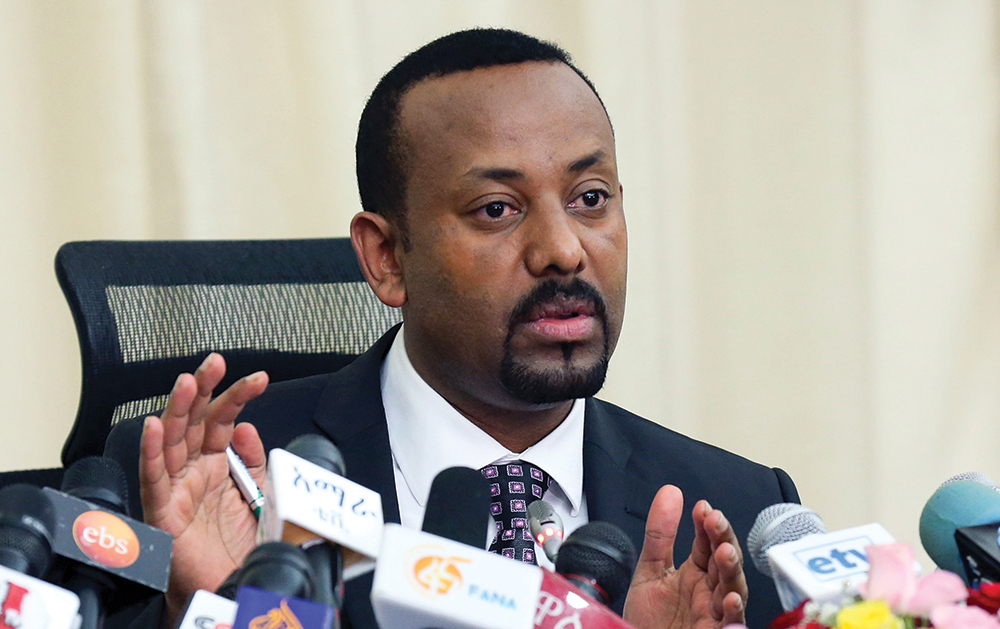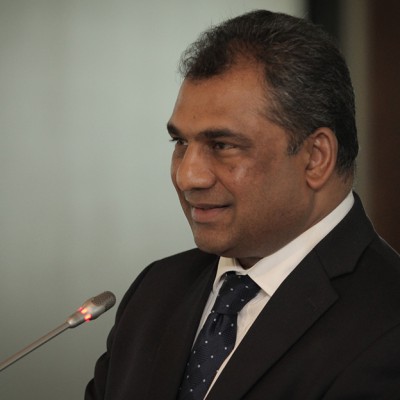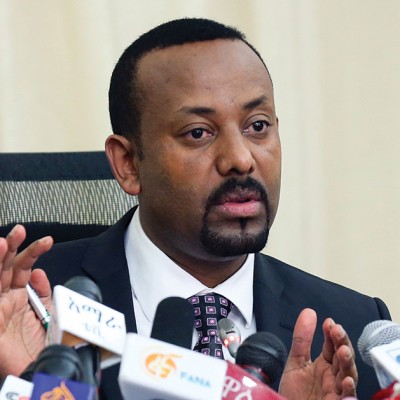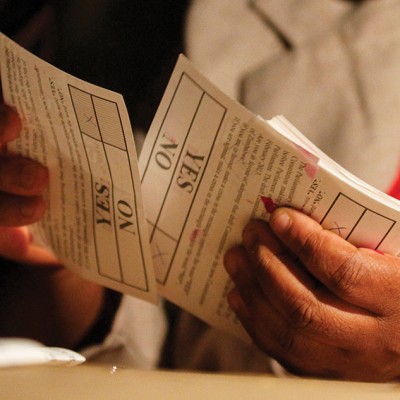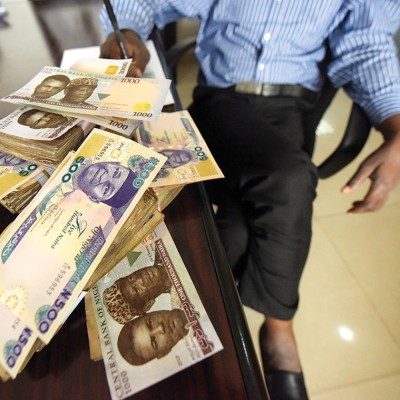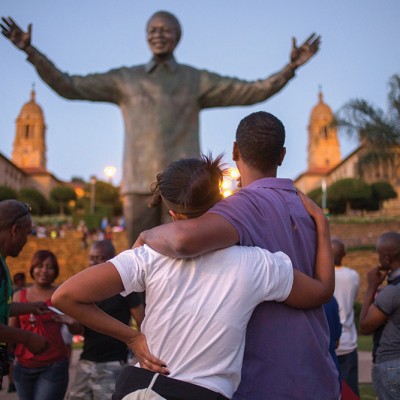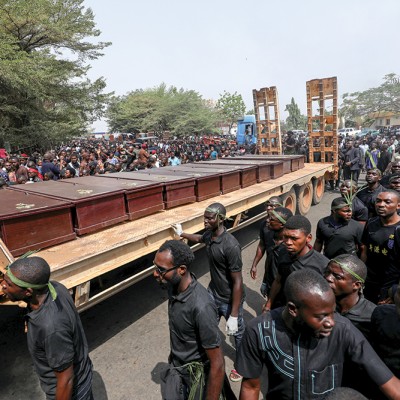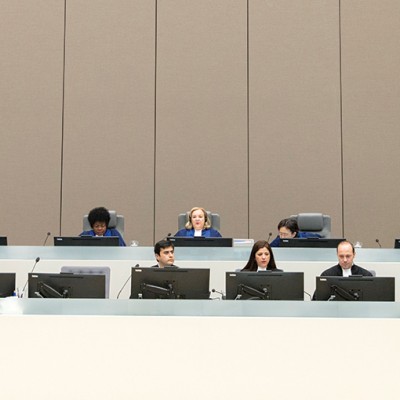Introduction1
The political and economic reforms introduced by Ethiopia’s new Prime Minister Abiy Ahmed Ali since he took office in April 2018 have been the object of much coverage and debate in the media. Depending on how these changes are implemented, they could improve the country’s socio-economic conditions. From a peacebuilding perspective, they also have the potential to ease tensions between certain ethnic groups.2
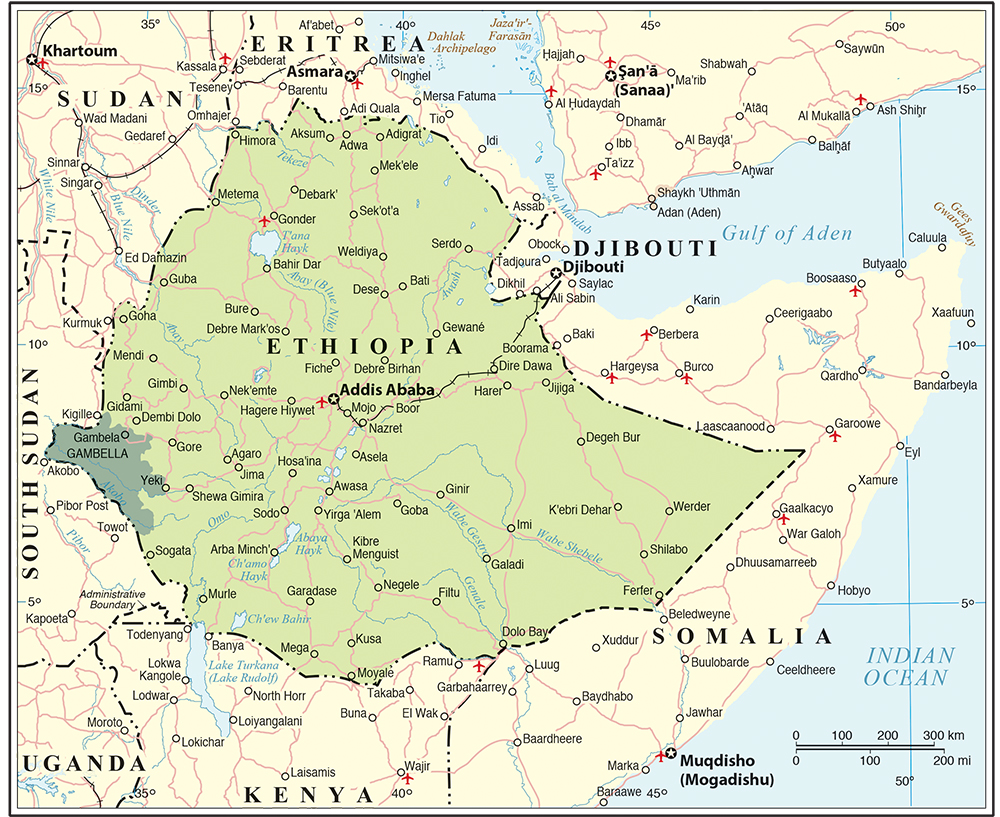
But in the midst of these transformations, another sweeping reform has almost gone unnoticed: the comprehensive overhaul of Ethiopia’s refugee system. Initiated in 2017 under the auspices of the United Nations (UN), the reform is expected, inter alia, to ease the financial pressure the country faces in delivering services to refugees and asylum seekers, and reduce the work and movement restrictions imposed on refugees. The reform may also support peace in the country, as it could help decrease the tensions that often develop between refugees and the local communities hosting them.
This article explores the challenges and opportunities that Ethiopia’s refugee system reform represents for peacebuilding by looking at the case of Gambella, one of Ethiopia’s most conflict-ridden regions. More precisely, it examines and makes recommendations on how the reforms can be implemented in a way that does not exacerbate existing tensions between the Anuak and the Nuer, two ethnic groups inhabiting the region. The article also looks at how the reform offers opportunities for improving local peacebuilding capacities.
Ethiopia and the Comprehensive Refugee Response Framework
At the UN Leaders’ Summit held in New York City in September 2016, all members of the organisation signed the New York Declaration. The document contains a set of non-binding commitments to enhance the protection of refugees and migrants. The Declaration tasks the United Nations High Commissioner for Refugees (UNHCR) with drafting a “Global Compact on Refugees” (a non-binding agreement that captures the political commitment of Members States to specific principles and actions) in 2018, building upon the lessons learned from the initial implementation of the Comprehensive Refugee Response Framework (CRRF).
The CRRF is an Annex to the Global Compact on Refugees. It is a set of principles and commitments taken by participating states to implement new mechanisms in response to refugee challenges in developing countries, where most refugees are hosted. The core objectives of the Framework are to ease pressure on the host countries, enhance refugee self-reliance, expand access to third-country resettlement solutions, and support conditions in countries of origin for safe return.3 To help achieve these goals, many developed nations have pledged to donate money to participating developing countries. Many see the CRRF as a way for wealthy nations to stem the flow of asylum seekers arriving at their borders by promoting their integration in the country where they first settle.4 Among other countries, Ethiopia adopted the CRRF in early 2017 to facilitate the implementation of nine pledges, divided into six thematic areas, made during the UN Leaders’ Summit in New York:5
| Thematic Area | Pledge |
| 1. Out of Camp Policy | 1. Expand the “Out-of-Camp” policy to benefit 10% of the current total refugee population (the policy currently only allows Eritrean refugees to seek formal work outside of camps under certain conditions). |
| 2. Education | 2. Increase enrolment in primary, secondary and tertiary education for all qualified refugees. |
| 3. Work and Livelihood | 3. Provide work permits to refugees and to those with permanent residence identification. |
| 4. Provide work permits to qualified refugees in the areas permitted for foreign workers. | |
| 5. Make available irrigable land to allow 100 000 people (refugees and local communities) to engage in crop production. | |
| 6. Build industrial parks where a percentage of jobs will be committed to refugees. | |
| 4. Documentation | 7. Provide other benefits such as issuance of birth certificates to refugee children born in Ethiopia, with the possibility of opening bank accounts and obtaining driving licenses later. |
| 5. Social and Basic Services | 8. Enhance the provision of basic and essential social services. |
| 6. Local Integration | 9. Allow for local integration of protracted refugees who have lived for 20 years or more in Ethiopia. |
The potential benefits of these pledges are numerous for Ethiopia, a country that remains largely underdeveloped yet hosts Africa’s second largest refugee population (915 073 were officially registered as of April 2018).6 For some, the CRRF offers a win-win solution for refugees and host communities alike, given that some of the policies the government wants to implement are supposed to benefit both groups. For instance, Ethiopia’s construction of industrial parks with funding from international partners is expected to create up to 100000 jobs, of which 30% will be available to refugees. Social infrastructure to be built for refugees, like schools and health centres, will also benefit host communities.7
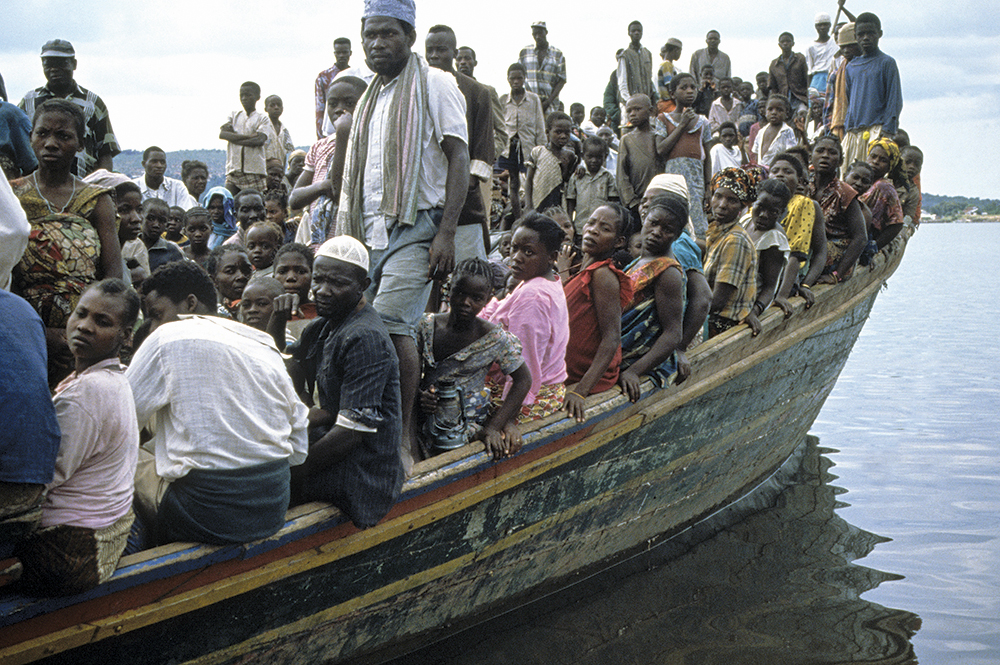
Despite this positive outlook, numerous challenges remain. In a climate of decreasing development funding, the government’s lack of resources is already making it difficult to extend its duty of care to refugees.8 From a peacebuilding perspective, the potential impact of the Framework on domestic conflict dynamics also represents a challenge. The following section thus looks at the conflict between the Anuak and the Nuer in Gambella. It provides a general profile of the region and background information on the conflict, and also examines the challenges and opportunities that the CRRF represents for peace in the region.
Gambella
Gambella is one of the nine federated states of Ethiopia. It is peripheral and marginal, both geographically and socio-politically. Bordering South Sudan, it is one of the hottest lowlands in the country. The average temperature is 37 degrees celsius at an altitude of only 500 meters above sea level, in contrast to the neighbouring highland regions which enjoy a more temperate climate and rise to an altitude of 3 000 meters. Having been only loosely integrated into the Ethiopian state before 1991, it is one of the country’s least developed regions in terms of infrastructure and social services. Almost half of all refugees in Ethiopia reside in the region, most of them having fled the South Sudanese civil war.9
The Anuak-Nuer Conflict in Gambella
The roots of the conflict partly stem from the traditional relationship to land and identities of both groups. For the Anuak, who are primarily cultivators, identity is relatively fixed and strongly connected to land. Being an Anuak requires one to be born from an Anuak father and mother and those residing anywhere but in their native village are considered guests rather than Anuak. For the Nuer, who are mostly pastoralists, identity is not territorialised: some Nuer men specifically seek Anuak women to marry as bride prices are lower, and all children from such unions are considered Nuer by the Anuak.
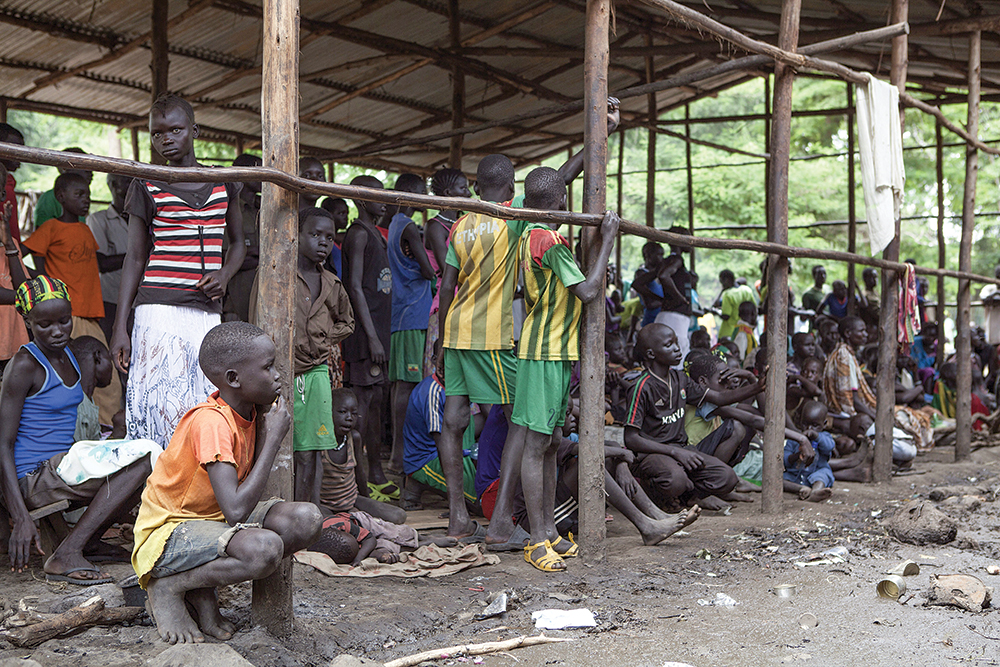
While periodic clashes, mostly attributed to land and access to resources, have occurred since the 19th century, tensions became increasingly politicised under the communist regime of the Derg (military government ruling Ethiopia between 1974 and 1991). In the 1980s, the Sudanese government’s assistance to Ethiopian rebels fighting the Derg was reciprocated by the latter’s support for the Sudan People’s Liberation Army (SPLA), a group fighting the central Sudanese government and whose ranks were largely made up of ethnic Nuer. The Derg allowed the SPLA to operate from bases in Gambella and establish permanent settlements in the region. Nuer men were also given important positions in the Gambella government. Dissatisfied Anuak, whose leaders envisioned a political system where they occupied better positions than the Nuer, established the Gambella People’s Liberation Movement to fight the Derg regime.
In 1991, following the overthrow of the regime by the Ethiopian People’s Revolutionary Democratic Front, Gambella became a separate regional state. Partly due to their contributions to the regime change, the Anuak were appointed to prominent regional positions. Feeling ostracised, the Nuer tried to obtain greater recognition, which resulted in violent conflicts with the Anuak throughout the 1990s. Fuelling their competition for power was the 1994 census, which showed that the Nuer had become more populous than the Anuak in Gambella, partly due to the mass arrival of Nuer refugees who had fled the violence in the second Sudanese civil war in the 1980s. Against this background, a deadly conflict erupted in 2002 over the succession to the office of the vice president.

Tensions rose again in December 2013, when the South Sudanese civil war broke out, causing the exodus of thousands of refugees, mainly Nuer, to Gambella. This increased the pressure on local resources and further exacerbated the issue of fair distribution of goods between refugees and host populations in a region that lacks critical infrastructure. In this context, violence between the Anuak and the Nuer erupted once again in February 2016 and in April 2016.10
Ethiopia’s Refugee System Reform in Gambella: Challenges and Opportunities
The core issue of the Anuak-Nuer conflict is clearly related to resource distribution and land, which in turn fuels political competition between both groups. The influx of South Sudanese refugees has further contributed to an increase in tensions over resources, especially in a context where most refugees are Nuer and the Anuak-Nuer demographic balance is a contentious issue. The Ethiopian government’s Livelihood and Local Integration pledges are thus of particular relevance for Gambella. For the sake of brevity, the analysis that follows only focuses on activities that are to be implemented under these pledges:
Livelihood Pledge
Activity: Develop a legal and policy framework outlining the terms and conditions for access to land by the refugees.
Activity: Allocate at least 10 000 hectares of irrigable and cultivable land for the benefit of both the host communities and refugees.
Local Integration Pledge
Activity: Facilitate peaceful coexistence with host population through an increase of peacebuilding projects.
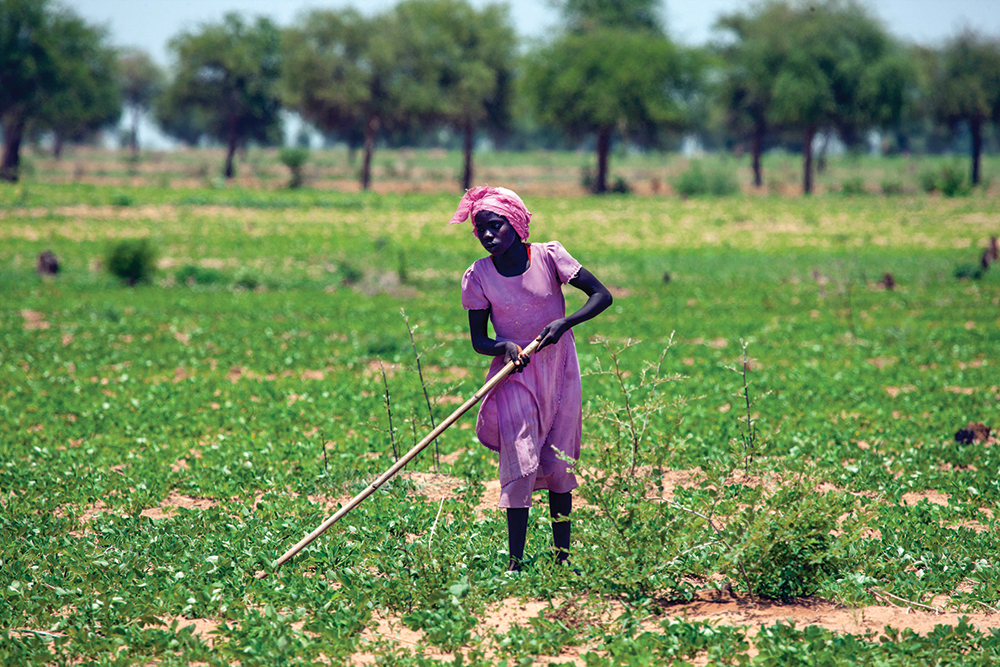
Challenges
Land grants to refugees have a very high potential of fuelling tensions in Gambella. No matter how carefully this pledge is put in place, tensions will likely arise due to the complexity of the contentious dynamics related to resources in Gambella, and the traditional attachment to land for the Anuak.11 As such, stakeholders involved in the implementation of the land grant scheme under the Livelihood pledge in Gambella should keep in mind the following:
- The process to develop eligibility criteria for the allocation of land to refugees should be inclusive, participatory and adopt a consensus-building approach. It should seek the active involvement of the regional Gambella government, local authorities, Anuak and Nuer community leaders, host communities more generally and refugees. It should be receptive to traditional Anuak and Nuer views on their relationship to land.
- Consultations should be conducted in a highly transparent manner, by announcing meetings in advance, and holding them in public spaces. When space is limited, meeting details and decisions should be made available to the public in a format accessible to a population with a high rate of illiteracy (for example, through local radio broadcasts) to avoid accusations of a hidden agenda aimed at favouring one group over another.
- Stakeholders involved in designing the land grant criteria and allocation process should be given appropriate resources to engage in localised conflict analysis early on. Using the “Integrated Land Use & Development Master Plan for Gambella Peoples’ National Regional State”12 as a reference document, they could undertake research and consultations to examine the intricate, highly localised conflict dynamics in Gambella in the locations where land grants might be given, to lower the risk of fuelling existing resource, ethnic, or clan-based tensions.

Opportunities
Despite the concerns raised, the CRRF also offers opportunities to reinforce peaceful relations in Gambella. In particular, the proposed peacebuilding activities under the Local Integration pledge could be used as an entry point to help mitigate Anuak-Nuer tensions. Given the scarcity of peacebuilding projects in the region,13 stakeholders could take advantage of the funding opportunities offered by the Framework to obtain long-term support for conflict prevention and resolution mechanisms. Stakeholders involved in implementing the Local Integration pledge should therefore consider the following:
- Develop the peacebuilding skills of local Anuak and Nuer grassroots organisations, with the aim to create permanent, local conflict resolution structures and peacebuilders. These structures should involve Anuak and Nuer elders in peace skills development initiatives to integrate traditional conflict resolution mechanisms in the local peacebuilding toolbox.
- Implement a peacebuilding curriculum and activities with regional content in educational institutions in Gambella. The curriculum could, inter alia, educate the youth on the importance of traditional conflict resolution mechanisms in Gambella. Targeting schools and the university is particularly important due to their role as tension-reducing spaces of inter-ethnic civic interactions, but also as places where conflict may be triggered. While the federal government of Ethiopia already includes general peace education content in the Civics and Ethical Education courses offered to students between grade 5 and grade 12, the region’s Education Bureau could add peace education material tailored to Gambella students’ local cultures and reality.
Conclusion
If implemented in a conflict-sensitive manner, the pledges made by the Ethiopian government to strengthen support given to refugees within its borders could help improve peacebuilding capacity in Gambella. Admittedly, the scope of this analysis is limited: an in-depth assessment of the Gambella context and impact of all CRRF pledges in the region is clearly warranted.14
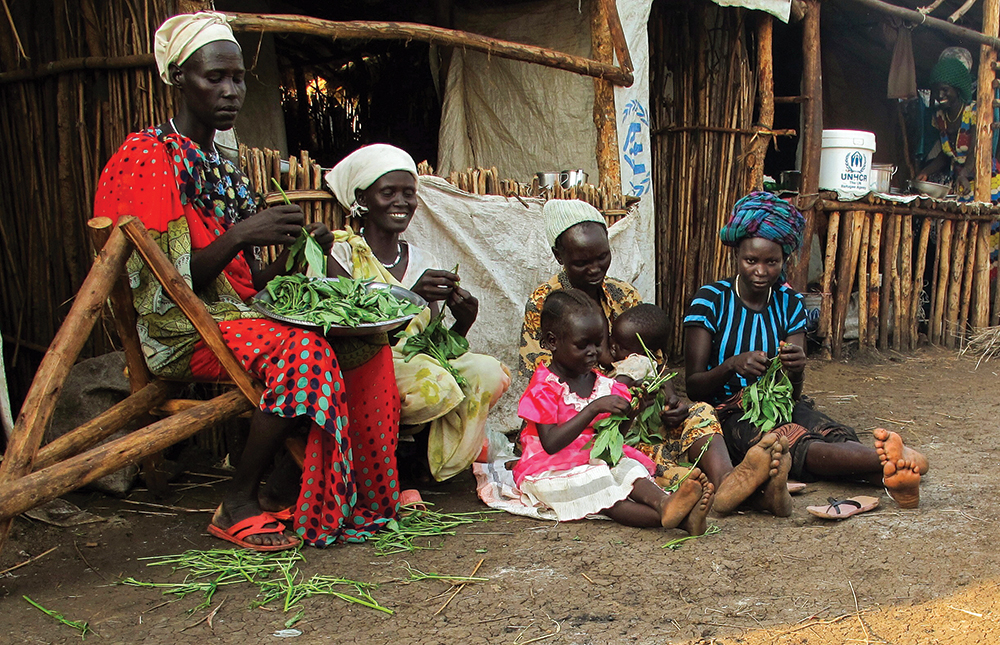
Even though each refugee-hosting region of Ethiopia is different, the implementation of the CRRF in Gambella will constitute a litmus test for the rollout of conflict-sensitive refugee policy reforms for the rest of the country. Success in this region could even generate examples of best practices for conflict-sensitive programming for other nations that have adopted the CRRF.
As world leaders and policy makers finalise the Global Compact on Refugees in 2018, they should pay particular attention to Ethiopia and build upon the lessons learned from its initial CRRF implementation. They must remember that a core objective of the Framework is to help both refugees and host communities, and that putting in place conflict-sensitive programmes is essential to achieve this. If successful, Ethiopia’s new refugee system has the potential to bring about positive change, including more peaceful inter-ethnic relations. This, in turn, can support the objectives of the political and economic transformation announced by Ethiopia’s new Prime Minister, and help the country achieve a more prosperous and peaceful future.
Endnotes
- This article is based on a research paper submitted in April 2018 to the Rotary Peace Center at Chulalongkorn University, Thailand, in partial fulfilment of a Professional Development Certificate programme in peacebuilding and conflict resolution through a Rotary Peace Fellowship.
- For a relatively optimistic account of the changes brought by Prime Minister Abiy Ahmed Ali, see: Ahmed, Hadra (2018) ‘‘These changes are unprecedented: How Abiy is upending Ethiopian politics”, Available at: <www.theguardian.com/world/2018/jul/08/abiy-ahmed-upending-ethiopian-politics> [Accessed 13 July 2018]. For a more critical account, see: Halakhe, Abdullahi Boru (2018), ‘Are Ethiopians blinded by Abiymania?’, Available at: <www.aljazeera.com/indepth/opinion/ethiopia-abiy-ahmed-usher-era-reform-africa-180704083850088.html> [Accessed 13 July 2018]. On easing the country’s inter-ethnic tensions, see Maasho, Aaron (2018) ‘Ethiopia’s new PM pledges reforms to end violence’, Available at: <www.reuters.com/article/us-ethiopia-politics/ethiopias-new-pm-pledges-reforms-to-end-violence-idUSKCN1H90N2> [Accessed 13 July 2018].
- UNHCR (2018) ‘CRRF Global Digital Portal’, Available at: <www.globalcrrf.org> [Accessed 13 July 2018].
- Gebresenbet, Fana (2017) ‘Security Implications of Hosting Refugees: The Case of South Sudanese Refugees in Gambella, Southwestern Ethiopia’. Available at: <www.forum.ssrc.com> [Accessed 18 February, 2018].
- For more details, see: Administration for Refugee and Returnee Affairs (2017) Roadmap for the Implementation of the Federal Democratic Republic of Ethiopia Government Pledges and the Practical Application of the CRRF in Ethiopia. Addis Ababa: Administration for Refugee and Returnee Affairs.
- UNHCR (2018) ‘CRRF Global Digital Portal: Ethiopia’, Available at: <www.globalcrrf.org/crrf_country/eth> [Accessed 13 July 2018].
- Abebe, Tsion Tadesse (2018) ‘Mutual benefits of Ethiopia’s Refugee Policy’, Available at: <issafrica.org/iss-today/mutual-benefits-of-ethiopias-refugee-policy> [Accessed 10 July 2018].
- UNHCR (2018) ‘CRRF Global Digital Portal’, Available at: <www.globalcrrf.org> [Accessed 13 July 2018].
- Ellman, Anthony. (1972) An Agricultural and Socio-Economic Survey of South Sudan Refugee Settlements and Surrounding Areas in Gambella Awraja, Ethiopia. Addis Ababa: UNHCR; Feyissa, Dereje (2006) Strengthening Peace and Governance Initiatives at the Sudan-Ethiopian Border; With a Focus on Entry Points for Enhancing Economic Development and Trade. Addis Ababa: PACT Ethiopia; UNHCR (2018) ‘CRRF Global Digital Portal: Ethiopia’, Available at: <www.globalcrrf.org/crrf_country/eth> [Accessed 13 July 2018].
- To draw this historical sketch of the Anuak-Nuer conflict, the following sources were used: Feyissa, Dereje (2011) Playing Different Games: The Paradox of Anywaa and Nuer Identification Strategies in the Gamballa Region, Ethiopia. New York – Oxford: Berghahn; Gebresenbet, Fana (2017) ‘Security Implications of Hosting Refugees: The Case of South Sudanese Refugees in Gambella, Southwestern Ethiopia’, Available at: <www.forum.ssrc.com> [Accessed 18 February, 2018]; Young, John (1999). Along Ethiopia’s Western Frontier: Gambella and Benishangul in Transition. Journal of Modern African Studies, 37, pp. 321–346; Tadesse, Medhane (2006). Gambella: The Impact of Local Conflict on Regional Security. Pretoria: Institute for Security Studies; Office français de protection des réfugiés et des apatrides – OFPRA (2015) Situation actuelle dans la province de Gambella. Paris: Government of France; Davison, William (2016) ‘Ethnic Clashes in Ethiopia’s Gambella Kill Dozens, Official Says’, Available at: <www.nazret.com> [Accessed 18 February 2018); Forum, Ecad (2016) ‘The Only Way to End Escalating Ethnic Violence in Gambella, Ethiopia’, Available at: <www.ecadforum.com> [Accessed 24 February 2018]; and Sudan Tribune (2016) ‘Calm Returns to Gambella Town After Clashes Involving Nuer and Highlanders’, Available at: <www.sudantribune.com> [Accessed 24 February 2018].
- Gebresenbet, Fana Assistant Professor, Institute for Peace and Security Studies, Addis Ababa University (2018) Phone interview with the author on 15 February 2018.
- The first one of its kind for Gambella, the “Integrated Land Use & Development Master Plan for Gambella Peoples’ National Regional State”, initiated in 2013, should be completed in 2018. One of the outcomes of this study is to serve as a basic reference document for development projects to increase sustainable productivity in Gambella. (Horn of Africa Regional Environment Centre and Network (2017) ‘Integrated Land Use & Development Master Plan for Gambella Peoples’ National Regional State’, Available at: <hoarec.org/2017/01/04/integrated-land-use-development-master-plan-ildp-for-gambella-peoples-national-regional-state> [Accessed 12 July 2018]).
- A cursory online review of peacebuilding projects by non-governmental organisations (NGOs) and intergovernmental organisations in Gambella reveals that most of them are tied to time-limited budgets and are usually implemented in response to specific occurrences of violence. The review also shows that there seems to have been more peacebuilding activities in Gambella prior to 2009, which can partly be explained by Ethiopia’s 2009 Proclamation for the Registration and Regulation of Charities and Societies, which has drastically limited the space within which foreign-funded NGOs can work on the promotion of human rights, affecting conflict resolution activities (see: Brechenmacher, Saskia (2017) Civil Society Under Assault: Repression and Responses in Russia, Egypt, and Ethiopia. Washington DC: Carnegie Endowment for International Peace).
- A United Nations Children’s Fund (UNICEF) project is currently underway to determine how the organisation can best support Ethiopia’s delivery of integrated services to host communities and refugees in a conflict sensitive manner specific to the context of each refugee-hosting region (Gambella, Benishangul-Gumuz, Tigray, Afar and the Somali region).

